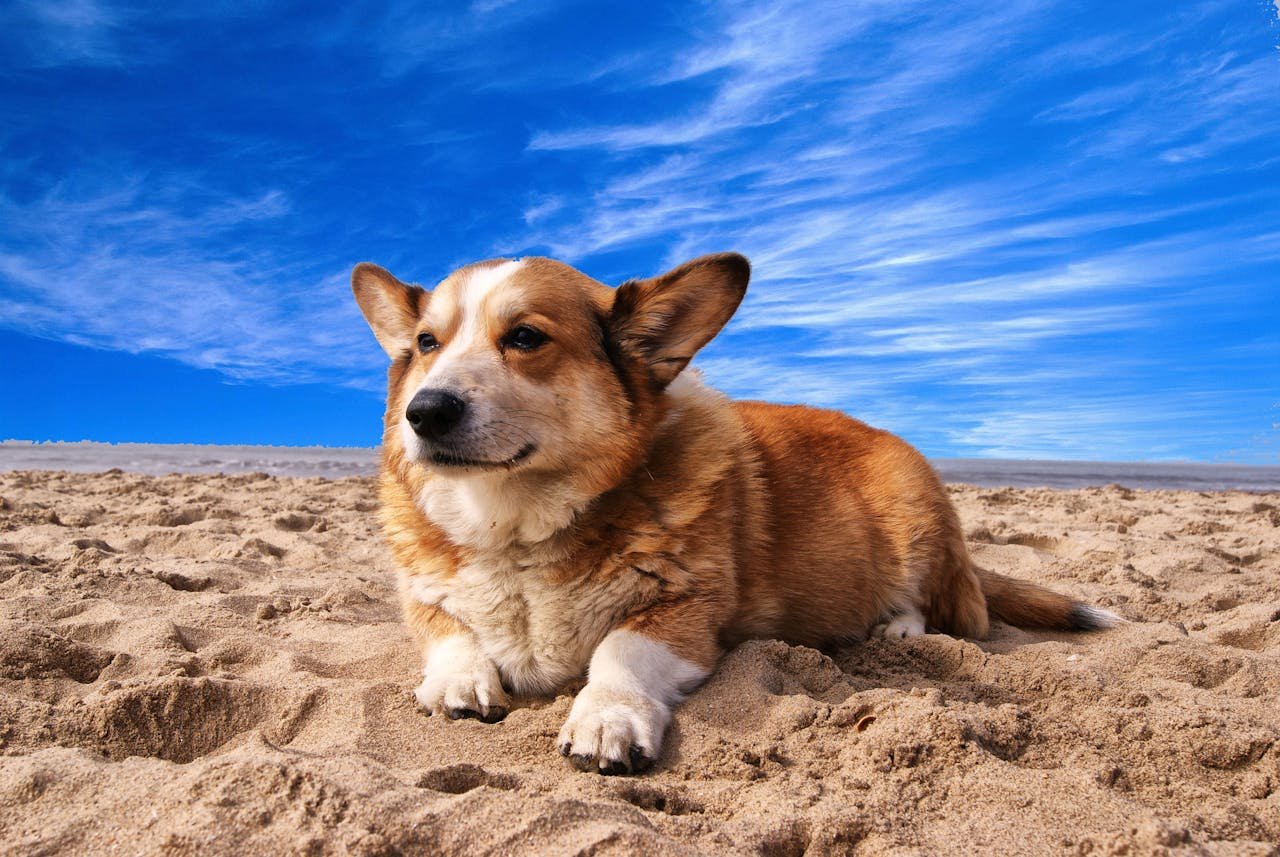Dogs are curious by nature and often explore the world with their mouths. While playing at the beach or in a sandbox, some dogs might accidentally or intentionally ingest sand. While this might seem harmless, consuming sand can lead to serious health issues such as gastrointestinal blockages. This guide will walk you through what to do if your dog has eaten sand, how to spot symptoms, and when to seek veterinary help.
1. Assess the Situation: How Much Sand Did Your Dog Eat?
The first thing to consider is how much sand your dog might have ingested. Small amounts of sand may pass through your dog's digestive system without causing significant issues, but larger quantities can lead to complications like sand impaction, where the sand accumulates in the intestines and causes blockages.
If you’re unsure how much sand your dog ate, observe their behavior closely over the next few hours. Even if your dog seems fine initially, symptoms can develop later as the sand moves through their system.
2. Recognize the Symptoms of Sand Ingestion
Some dogs might not show immediate signs after ingesting sand, but common symptoms can develop within hours or days, depending on the amount of sand consumed. Here are some key symptoms to watch for:
- Vomiting: One of the earliest signs that your dog has ingested sand is vomiting. The body may attempt to expel the sand before it causes further problems.
- Lethargy: If your dog seems unusually tired or sluggish, this could indicate discomfort or pain from the sand in their stomach or intestines.
- Abdominal Pain: Your dog may exhibit signs of abdominal discomfort, such as whining, restlessness, or sensitivity to touch.
- Constipation or Straining to Defecate: Sand can cause blockages, making it difficult for your dog to pass stool. If your dog is straining to defecate or producing small, dry stools, this could be a sign of sand impaction.
- Loss of Appetite: A dog with sand in their digestive system may refuse to eat due to discomfort.
- Dehydration: Sand can absorb moisture in your dog’s intestines, leading to dehydration. Signs of dehydration include dry gums, sunken eyes, and excessive panting.
Also Read - What To Do When A Snake Bites Your Dog
3. First Aid at Home
If your dog has eaten a small amount of sand and is not yet showing severe symptoms, you can try some basic first-aid steps at home. However, these should only be considered temporary measures until you can consult your vet.
- Hydration: Encourage your dog to drink plenty of water to help move the sand through their system. Hydration is key to preventing the sand from causing blockages.
- Small, Frequent Meals: Offer small, easily digestible meals like boiled chicken and rice. This can help coat the sand and aid in its passage through the digestive tract.
- Monitor Your Dog: Keep a close eye on your dog’s behavior, stool, and overall health. If symptoms worsen or persist for more than 24 hours, contact your veterinarian.
4. When to Seek Veterinary Help
If your dog has consumed a large amount of sand or begins showing severe symptoms, veterinary care is essential. Sand impaction is a medical emergency and requires prompt attention. Call your vet if you notice any of the following:
- Persistent vomiting or dry heaving
- Severe abdominal pain (e.g., whining, inability to lie down comfortably)
- Lack of bowel movements for more than 24 hours
- Visible signs of dehydration or weakness
- Any other unusual behaviors that concern you
Also Read - Digestive Health in Dogs: Timing, Tips, and Troubleshooting
5. Veterinary Treatment Options
Once you’re at the vet’s office, the treatment will depend on the severity of your dog’s condition and the amount of sand they ingested.
- Physical Examination and X-rays: Your vet will likely perform a physical examination and may take X-rays to determine the extent of the sand ingestion and whether it has caused a blockage.
- Fluid Therapy: Dehydration is a significant risk with sand ingestion, so your vet may administer intravenous (IV) fluids to help hydrate your dog and facilitate the movement of sand through their intestines.
- Laxatives or Enemas: In some cases, the vet may prescribe laxatives or perform an enema to help your dog pass the sand more easily.
- Surgery: In severe cases where sand impaction causes a complete blockage, surgery may be necessary to remove the sand and prevent further complications. This is typically a last resort when other treatments are unsuccessful.
6. Preventing Sand Ingestion in the Future
Prevention is the best strategy for avoiding future incidents. Here’s how you can reduce the chances of your dog eating sand:
- Supervision: Keep a close eye on your dog while they’re at the beach or playing in a sandbox. Discourage them from eating or playing with sand, and redirect their attention to toys or other safe activities.
- Limit Access: If your dog tends to eat sand, try to limit their access to sandy areas. Consider using a long leash at the beach to control their movement more effectively.
- Bring Plenty of Water: Dogs may eat sand out of thirst, so ensure they always have access to fresh water during beach trips or outdoor activities.
Also Read - Dog Ate Onion: Symptoms, Risks and What to Do Immediately
Conclusion
While sand ingestion may seem like an innocent mistake, it can have serious health consequences for your dog. Knowing the symptoms to look for and acting quickly can make all the difference. If your dog shows signs of sand ingestion, monitor them closely, provide first aid as needed, and don’t hesitate to seek veterinary help if symptoms worsen. Prevention is key, so be proactive in keeping your dog safe during outdoor adventures.

Comments